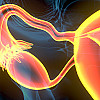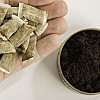Recent Blog Articles

Lead poisoning: What parents should know and do

How does waiting on prostate cancer treatment affect survival?

Does running cause arthritis?

Is alcohol and weight loss surgery a risky combination?

Preventing ovarian cancer: Should women consider removing fallopian tubes?

Healthier planet, healthier people

Is snuff really safer than smoking?

Will miscarriage care remain available?

Considering collagen drinks and supplements?

Does less TV time lower your risk for dementia?
Vasculitis overview
- Reviewed by Robert H. Shmerling, MD, Senior Faculty Editor, Harvard Health Publishing; Editorial Advisory Board Member, Harvard Health Publishing
What is it?
Vasculitis means inflammation of blood vessels. The inflammation can be short term (acute) or long term (chronic), and it can be so severe that it reduces blood flow to tissues and organs. This can cause dangerous organ and tissue damage, especially when vasculitis affects blood vessels in the brain, lungs, kidneys or other vital areas.
Although the cause of most forms of vasculitis remains unknown, many forms probably are related to a problem with the immune system. One theory is that, for unknown causes, the immune system attacks the blood vessels, which causes them to become inflamed. Some researchers think this immune attack might be triggered by an infection, drug or something else in the environment.
There are many different forms of vasculitis, including:
- Polyarteritis nodosa. – This affects small- to medium-sized blood vessels in many different parts of the body, especially the skin, intestines, kidneys and nerves. It is a progressive illness, meaning it continues to get worse, and it can lead to death. It typically occurs in adults in their late 40s or early 50s, and it affects men two to three times more often than women.
- Cutaneous leukocytoclastic angiitis (previously called hypersensitivity vasculitis) – This affects the smallest blood vessels (including arterioles, veins, and capillaries), primarily in the skin. Hypersensitivity vasculitis can be triggered by an allergy (especially a reaction to a medication) or an infection but often the cause is unknown.
- Giant cell arteritis (also called temporal arteritis) – This affects medium to large arteries, including those around the scalp, face, eye, and the aorta as it travels from the heart and separates into branches leading to the neck and head. It usually affects people over the age of 55. It is rare among Black individuals, but it is more common among people of Scandinavian ancestry. Studies suggest that at least part of the tendency to develop this illness is genetic (inherited).
- Granulomatosis with polyangiitis (GPA) – This affects small- and medium-sized blood vessels in the kidneys and in the upper and lower respiratory tract (for example, sinuses and lungs). It can occur in any age group and affects both sexes equally. The average age at the time the disease starts is 40, with only 15 percent of cases occurring in children and adolescents. It is more common in people of European ancestry and in white populations than in other ethnic groups.
- Takayasu's arteritis (also called aortic arch syndrome or pulseless disease) – This vasculitis affects medium- and large-sized arteries, especially the aortic arch and its branches near the heart. It most commonly affects teenage girls and young women, and it is most common in Asia.
- Kawasaki disease – This vasculitis affects the lymph nodes, skin, mucous membranes, and heart, including the coronary arteries (arteries that supply blood to the heart). It is seen most commonly in children.
Symptoms
Symptoms vary depending on the specific type of vasculitis:
- Polyarteritis nodosa – Fever, weight loss, weakness, fatigue, malaise, headache, abdominal pain, muscle aches, hypertension (high blood pressure), shortness of breath and rash
- Cutaneous leukocytoclastic angiitis – Raised, purple spots on the skin, fever, joint pain
- Giant cell arteritis – Fever, jaw pain after chewing, vision loss, headache, malaise, fatigue, poor appetite, joint pain
- Granulomatosis with polyangiitis (GPA) – Malaise, weakness, joint pain, poor appetite, weight loss, sinus pain, sinus drainage, bloody nose, a cough that may produce blood, shortness of breath, chest discomfort, red eyes, skin rash or ulcers, symptoms of kidney failure (such as nausea, fatigue, and reduced urine production)
- Takayasu's arteritis – Malaise, fever, night sweats, joint pain, poor appetite, weight loss, pain in one or both arms, fainting, symptoms of congestive heart failure (such as shortness of breath that's worse lying down)
- Kawasaki disease – Swollen lymph nodes (swollen glands) in the neck; swelling in the skin; redness of the mouth, lips and palms; peeling skin at the fingertips; chest pain
Diagnosis
Your doctor will ask about your symptoms and will examine you. This may be followed by:
- Standard blood tests, such as a complete blood count (CBC) and sedimentation rate or C-reactive protein (CRP), tests that indicate body-wide inflammation
- Blood tests to evaluate immune-system activity - Tests for antibodies, including those typically found in lupus and infections, and one specifically associated with many types of vasculitis (especially GPA), called anti-neutrophilic cytoplasmic antibody (ANCA)
- Blood tests to check for organ damage, including tests to assess liver and kidney function
- A urinalysis to evaluate possible kidney problems
- A tissue biopsy, in which a small sample of an organ (such as skin, muscle, nerve or kidney) is removed and examined in a laboratory - This is the most accurate way to diagnose vasculitis.
- A test called an arteriogram or angiogram - This can be performed as part of an MRI or CT scan, or as an X-ray test in which dye is injected into specific blood vessels to outline their path and check for areas of vessel damage or narrowing. This test generally is done only when a biopsy cannot be done or does not provide a diagnosis.
Expected duration
How long vasculitis lasts depends on the type. For example, most cases of cutaneous leukocytoclastic angiitis or Kawasaki disease go away on their own over a period of days or weeks. Granulomatosis with polyangiitis may respond to treatment at first, but many patients relapse and require treatment again. Giant cell arteritis typically requires therapy for a year or more.
Prevention
There is no way to prevent most forms of vasculitis. If a medication caused vasculitis, you may be able to prevent another case of vasculitis by avoiding that drug.
Treatment
Treatment varies by type of vasculitis:
- Polyarteritis nodosa – This form of vasculitis usually is treated with prednisone (sold under several brand names) and, in most cases, an additional immunosuppressant such as cyclophosphamide (Cytoxan, Neosar), azathioprine (Imuran), methotrexate (Rheumatrex, others), mycophenolate (Cellcept), or rituximab (Rituxan).
- Cutaneous leukocytoclastic angiitis – This form often goes away on its own without treatment. Any newly started medication that may have triggered the vasculitis should be stopped, if possible. For severe cases, corticosteroids may be given.
- Giant cell arteritis – Treatment begins with high doses of prednisone, which gradually are reduced over many months. If symptoms return, steroid treatment may be necessary for a year or more. Additional medications, such as tocilizumab (Actemra) or methotrexate (Rheumatrex, and others), may be recommended.
- Granulomatosis with polyangiitis – Standard treatment includes prednisone along with cyclophosphamide or rituximab. Methotrexate (Rheumatrex, and others), azathioprine (Imuran), mycophenolate (Cellcept), or other immune-suppressing medications may be used for maintenance therapy or when initial treatments are not effective. In some severe cases, a procedure called plasma exchange may be recommended. With plasma exchange, blood is taken out of the patient, the liquid portion of the blood (called plasma) is removed, and the blood cells along with plasma from a blood donor or a plasma substitute are transfuses back into the person.
- Takayasu's arteritis – Corticosteroids are used to treat this condition. However, other immune suppressing medications may be recommended if improvement is not adequate with corticosteroids alone. Narrowed arteries may need to be corrected with surgery or angioplasty (inserting a balloon-tipped catheter to widen the vessels).
- Kawasaki disease – Treatment includes aspirin and a drug called gamma globulin given in high doses intravenously (into a vein) to reduce the risk of coronary artery damage. In some cases, corticosteroid therapy is recommended as well.
There are a number of other types of vasculitis; they tend to be treated with immune-suppressing medications as described above.
When to call a professional
Call your doctor if you experience unexplained fever, weight loss, fatigue or malaise (a general sick feeling), with or without areas of rash, muscle weakness, breathing problems, chest pain or other symptoms described above.
Prognosis
The outlook depends on the specific type of vasculitis:
- Polyarteritis nodosa – Though previously a disease with a high mortality, it is now treated successfully in up to 90 percent of patients.
- Cutaneous leukocytoclastic angiitis – Most cases go away on their own, even without treatment. Rarely, the disease returns, especially if the person is exposed to the disease trigger (such as a new drug) again.
- Giant cell arteritis – The disease goes away in most people, but many require one or more years of treatment.
- Granulomatosis with polyangiitis – At one time, this illness was also almost always fatal. Now, with proper treatment, 90 percent of people have significant relief of symptoms, and the disease goes away completely in about 60 percent of patients.
- Takayasu's arteritis – For mild cases, the long-term prognosis is good. Overall, the 5-year survival is about 80 to 90 percent.
- Kawasaki disease – The outlook is excellent. Less than 3 percent of people with this disease develop fatal complications.
Additional info
American College of Rheumatology
http://www.rheumatology.org/
National Heart, Lung, and Blood Institute (NHLBI)
http://www.nhlbi.nih.gov/
National Organization for Rare Disorders (NORD)
http://rarediseases.org/
National Institute of Allergy and Infectious Diseases (NIAID)
http://www.niaid.nih.gov/
About the Reviewer

Robert H. Shmerling, MD, Senior Faculty Editor, Harvard Health Publishing; Editorial Advisory Board Member, Harvard Health Publishing
Disclaimer:
As a service to our readers, Harvard Health Publishing provides access to our library of archived content. Please note the date of last review or update on all articles.
No content on this site, regardless of date, should ever be used as a substitute for direct medical advice from your doctor or other qualified clinician.
Free Healthbeat Signup
Get the latest in health news delivered to your inbox!
